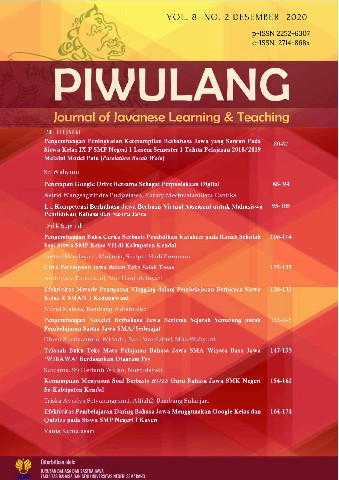Penerapan Google Drive Bersama sebagai Perpustakaan Digital
##plugins.themes.academic_pro.article.main##
Abstract
Digital libraries are another form of a library. The development of information technology brings changes to the form of libraries. The desire to provide library resources that are not limited by space and time also drives the rapid development of digital libraries. By utilizing a digital library-based information system, teachers can obtain appropriate and useful teaching materials. In Malang, so far digital books as a support for Javanese language learning are minimal, and it is not possible to duplicate them through conventional libraries because book financing is too expensive. This fact makes digital libraries a solution that can be built to bridge the shortage of teaching materials among Javanese teaching teachers. The method used in this research is the Technology Acceptance Model (TAM) method. From the results and discussion obtained problem-solving, database design, how the system works, and the display of the digital library system. The hope of this research is that the information system created can be applied to all Javanese MGMPs to support cheap, easy, and paperless information systems.
##plugins.themes.academic_pro.article.details##
References
Developer, G. (2018). Google Drive APIs REST.Hamtat Fran. Retrieved from developers.google.com/drive/v3/web/about-sdk den/
Jogiyanto. (2007). Sistem Informasi Keperilakuan. Yogyakarta: Andi.
Ma, Q., & Liu, L. (2011). The Technology Acceptance Model. Advanced Topics in End User Computing, Volume 4, (January). https://doi.org/10.4018/9781591404743.ch006.ch000
Sarwoyo, V. (2006). Mewujudkan Learning Society Melalui Optimalisasi Fungsi dan Peran Perpustakaan. Info Persadha, Vol. 7, pp. 65–68. Retrieved from e-journal.usd.ac.id
Susanto, S. E. (2010). Desain Dan Standar Perpustakaan Digital. Jurnal Pustakawan Indonesia, 10(2), 17–23.
Trilaksono, A. R. (2020). Efektivitas Penggunaan Google Drive Sebagai Media Penyimpanan Di Kalangan Mahasiswa. Jurnal Digital Teknologi Informasi, 1(2), 91. https://doi.org/10.32502/digital.v1i2.1651
